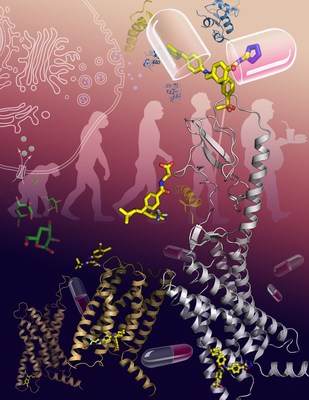Shanghai Led Consortium Produces High Resolution 3D map of GLP-1R
SHANGHAI, May 17, 2017 /PRNewswire/ -- An international team led by the iHuman Institute, ShanghaiTech University determined the molecular structure of the human glucagon-like peptide-1 receptor (GLP-1R). The results, described in the paper entitled "Human GLP-1 receptor transmembrane domain structure in complex with allosteric modulators", appears May 17, 2017 in the journal Nature.This study is published together in Nature with a companion paper led by colleagues at the Shanghai Institute of Materia Medica (SIMM) describing the full length glucagon receptor.

GLP-1R is a well-recognized drug target for type 2 diabetes, exemplified by several peptidic therapeutic agents on the market, with combined sales of several billions of dollars each year. Worldwide, the costs associated with treating diabetes and its complications are estimated to exceed $200bn a year.Diabetes is growing at an alarming rate throughout the world, with the most significant and recent growth occurring in China.
The GLP-1R structure was determined in complex with negative allosteric modulators (NAMs). The NAMs block the activation of GLP-1R by inserting into the cavity between helices VI and VII, while PAMs bind mainly to the space between helices V and VI enabling the activation. "This structure is one of the holy grails of GPCR drug discovery," said Professor Raymond Stevens at the iHuman Institute, ShanghaiTech University who co-led the study.
Orally available small molecule therapeutics have been vigorously sought after by many pharmaceutical companies for several decades to replace the peptides. "GPCRs that bind peptides can be particularly challenging for small molecule drug discovery given multiple points of connection," said iHuman Associate Professor Gaojie Song.
"This major undertaking started in 2002 when we were looking for small molecule GLP-1R agonists," said Professor Ming-Wei Wang of SIMM and Fudan University who co-led the study. "Our failed efforts in making the first orally active GLP-1R agonist Boc5 led us to conclude that high resolution structural biology is the preferred solution to drugability."
Collaborating institutions include Vrije Universiteit Amsterdam, University of Southern California, and Novo Nordisk. Financial support for this work comes from the Shanghai Municipal Government, ShanghaiTech University, National "1000 Talents Program for Foreign Experts", Shanghai "Pujiang Talents", GPCR Consortium, Chinese Academy of Sciences.
Related Links
http://ihuman.shanghaitech.edu.cn/
http://english.simm.cas.cn/
Photo - http://mma.prnewswire.com/media/512246/ShanghaiTech_University.jpg

